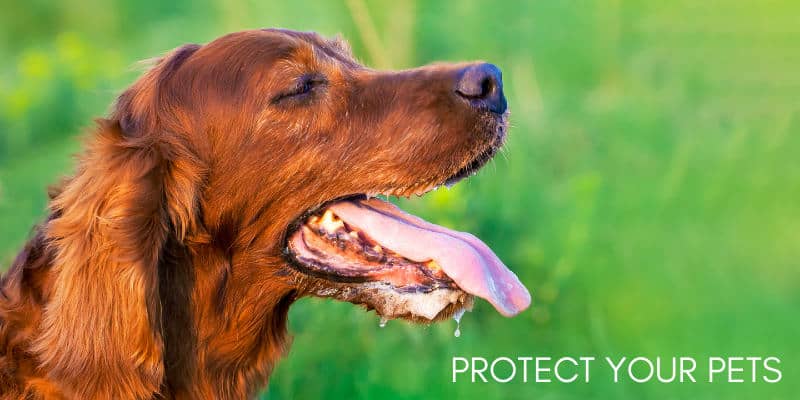As we bask in the warmth of summer, it's important to remember that the rising temperatures bring extra dangers for our pets. To ensure your dog, cat, or other furry companions stay safe and healthy this summer, follow these tips to prevent accidents and keep them protected.
Dehydration and Heat Stroke
Dehydration and heatstroke are serious threats during the hot summer months. Make sure your pet always has access to fresh water, no matter the season. Carry a portable water bowl during walks (many stores even sell affordable versions) and keep one in your car for longer trips.
Certain pets are more prone to heat stress, such as short-nosed breeds, dark-colored animals, overweight pets, or those with thick coats. Watch for these symptoms of dehydration or heatstroke:
• Excessive lethargy
• Reduced urination
• Dry gums
• Refusal to eat
• Sunken eyes
• Decreased skin elasticity (To check, gently pinch your pet's skin near the shoulder and release. If it doesn’t bounce back quickly, your pet may be dehydrated.)
While panting is normal for dogs to cool off, more extreme panting can indicate heat stress. To help cool them down, use fans, ice packs, frozen treats, or even a kiddie pool or sprinkler for playtime.
If you suspect your pet is dehydrated, cool them with a hose or wet towels and get them to a vet right away if they seem weak or unsteady.
Cars
Leaving pets in the car, even for a few minutes, can be deadly in hot weather. On warm days, the temperature inside a car can rise rapidly, causing heatstroke. Always take your pet with you when possible, or if you must leave them in the car, park in the shade with windows cracked. But remember, don’t leave them for long!

Bee Stings
Your pet’s curiosity can lead them to investigate buzzing bees, which might result in a sting. While a single sting may not be serious, watch for swelling and irritation. If swelling is extensive or your pet seems very agitated, contact your vet. Scratching at a sting site can cause “hot spots” or bald patches, which may require immediate attention.
Signs of a bee or wasp sting include:
• Mild to moderate symptoms: Swelling on the face, muzzle, or body, or hives.
• Severe symptoms: Difficulty breathing, severe hives, diarrhea, weakness, drooling, pale gums, cold limbs, or mental confusion.
Tarmac Heat
Just like humans, pets can suffer from burns on hot surfaces. If the ground feels too hot for you to walk barefoot, it's too hot for your pet’s paws. Limit walks on hot pavement and try to schedule outdoor activities during cooler times of the day.
Extra Fur
Summer grooming is key. Brush your pet regularly to remove excess or matted fur, which can lead to overheating. Depending on your pet's breed and climate, consider visiting a groomer to help them stay cool. However, avoid cutting their fur too short, as their coat provides protection from the sun.
Ticks
Ticks are small parasites that feed on your pet's blood. The best prevention is to stop them before they attach, but if your pet does get ticks, you’ll need a treatment to eliminate them. Always consult your vet for the most suitable product for your pet. If your dog shows signs of fatigue, fever, or limping, it could indicate a tick problem.
By staying mindful of these summer dangers and taking proactive steps, you can help ensure your pets have a safe, enjoyable summer!